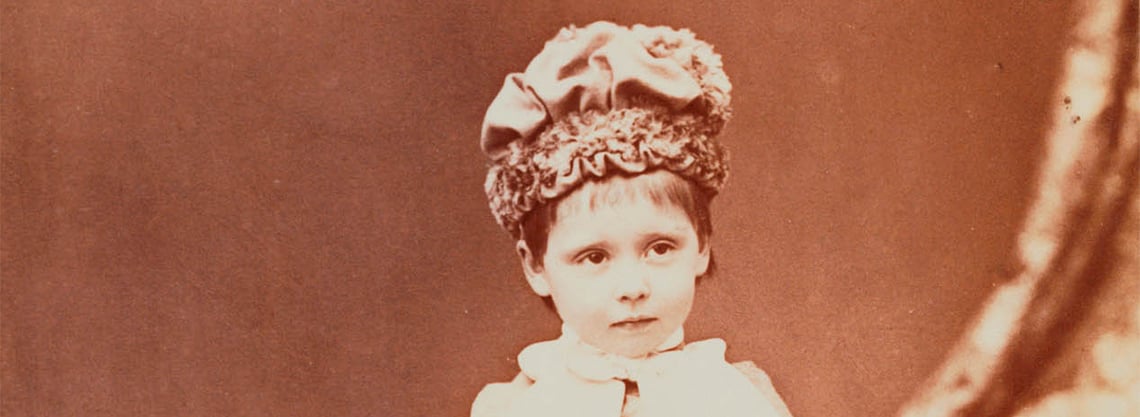The first photographic portrait of Prince Albert dates from 1842, while the earliest photograph of Queen Victoria (a double portrait with the Princess Royal) was taken by the miniature painter Henry Collen, c.1844.
From the late 1840s many photographers were commissioned to take portraits of the royal children, whose photographs were then collected and organised chronologically in albums. This series of 44 albums, known as ‘Portraits of Royal Children’, covers the years 1848 to 1899. These images, as well as others depicting Prince Albert and Queen Victoria, were intended to be quite informal, private portraits, recording happy or significant family events.
In this respect, particular mention must be made of William Bambridge (1819-79), a Windsor-based photographer, who started working for the Royal Family in 1854, taking photographs of paintings, pets and other animals, as well as making portraits. By 1858 he was acting as a sort of ‘photographic factotum’ to the Royal Family at Windsor, taking on the responsibility for the organisation, numbering and of the part of the collection known as ‘The Queen's Private Negatives’. Many of these were family portraits which had been taken by Bambridge himself.
These photographs were intended to be seen only by members of the Royal family and their immediate circle. In 1860, however, Queen Victoria allowed a series of carte-de-visite portraits of herself and her Consort, taken by J.E. Mayall, to be published. This decision certainly helped to establish the extremely popular fashion for collecting cartes-de-visite in Britain but, perhaps most importantly, modified the relationship between the Monarch and her subjects, drawing them much closer.
Soon after, in 1861, Prince Albert died. Photography was to help the Queen through her long period of grief and mourning, playing a crucial role in her desire to do justice to his memory. As a medium, photography was perfectly adapted to documenting, recollecting and memorialising.
Prince Albert died at the moment when the commercial side of photography was starting to develop rapidly, triggering a conflict of interests that set art against commerce, and idealism against profit. The emergence of photography as a business activity led the vast majority of professional photographers to be considered tradesmen rather than artists.
Queen Victoria continued to commission photographers, but it is clear that from 1862 onwards her use of photography concentrated on her family and on matters of state. The more formal relationship between the Monarch and professional photographer is confirmed by the stiff formality of the portraits commissioned in particular from 1867 onwards, when this work was exclusively in the hands of the leading commercial studios of the day – in contrast to the more informal portraits of the Queen taken by Fenton or Bambridge and the other early photographers personally known to the Monarch.
A new era of photography began in 1888 when the first roll-film camera was introduced onto the market, opening the door to amateur photographers. Several members of the Royal Family took up the new medium, with Princess Alexandra being the most enthusiastic and talented practitioner. Photography was able once again to invade the privacy of the Royal Family as they themselves were the authors of the photographs. For the first time the camera was now able to take truly informal pictures.








